Last month i was showing a friend around Trastevere. Our destination was the beautiful Basilica of Santa Cecilia (which I wrote about some time ago here), but as we wandered through the charming streets of the neighborhood, something caught my eye. It was the elegant façade of a church I had never noticed before—Santa Maria dell’Orto. Out of curiosity, we stepped inside.
The interior is a true baroque wonderland—golden details, intricate stucco work, richly painted chapels, and a quiet, majestic atmosphere that made me instantly fall in love with the place.
The church isn’t large, but every corner seems to hold a story, a painting, a sculpture worth pausing for. It felt like entering a forgotten treasure chest.
Santa Maria dell’Orto has a rather unique origin. It was founded in the late 15th century not by a pope or a cardinal, but by a group of local citizens—Roman vegetable sellers, to be exact. The story goes that they placed an image of the Virgin Mary in a small garden (hence the name “dell’Orto”, meaning “of the garden”) after experiencing what they believed to be a miracle during a time of plague.
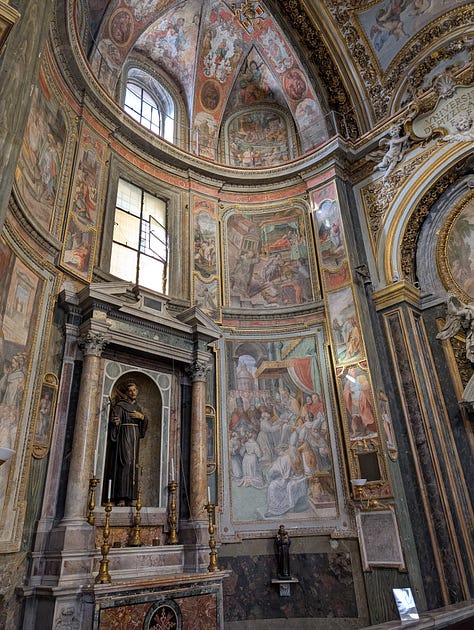

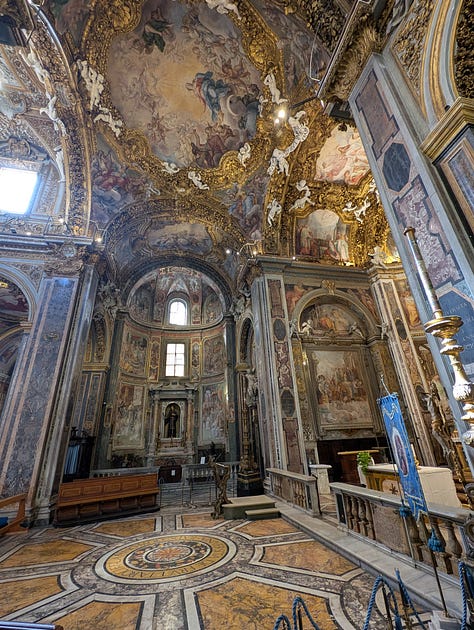
Grateful and devoted, they built a church on that very spot. Over time, the church became the spiritual home of a confraternity of tradespeople, especially those working in the nearby markets of Trastevere and Testaccio. Even today, you’ll find the symbols of different trades throughout the church: bakers, greengrocers, millers, pasta makers... all honored here.
In an interesting twist of history, the curious thing about this church is that it serves as the national church of the Japanese in Rome—a connection that dates back to an episode at the end of the 16th century, when a Japanese delegation is said to have prayed to the Madonna dell’Orto to calm a storm, and their prayers were answered.
Among the many artworks inside, don’t miss the "Madonna del Carmelo" by Giovanni Baglione, a prominent painter from Caravaggio’s time. You’ll also find an impressive organ from the 18th century, still in use today, and a richly decorated Chapel of Saint Lucy, glowing with golden stuccoes and delicate frescoes.
Besides its dazzling baroque décor, the church hosts several noteworthy artworks. One of the most impressive is the main altar, framed by twisted Solomonic columns and topped with a glorious painting of the Virgin and Child. There are chapels dedicated to different saints, each with its own atmosphere and ornamentation.
Don’t miss the ceiling frescoes, which give the impression of looking up into heaven itself. And keep an eye out for the coats of arms and symbols of the ancient guilds embedded in the architecture—they're little windows into the lives of everyday Romans from centuries past.
Santa Maria dell’Orto is located on Via Anicia, right in the heart of Trastevere but a bit off the usual tourist track—which makes it even more magical when you do find it. It's just a short walk from the Tiber and very close to Porta Portese.
If you’re in the area to visit Santa Cecilia or just exploring Trastevere’s vibrant alleys, I highly recommend making a detour. Step inside and enjoy the peaceful beauty of this overlooked treasure.
Because in Rome, even a casual walk can turn into a journey through time.
As always, if you want to use any of the photos from my visit, please remember to give credit to the author. Happy exploring!




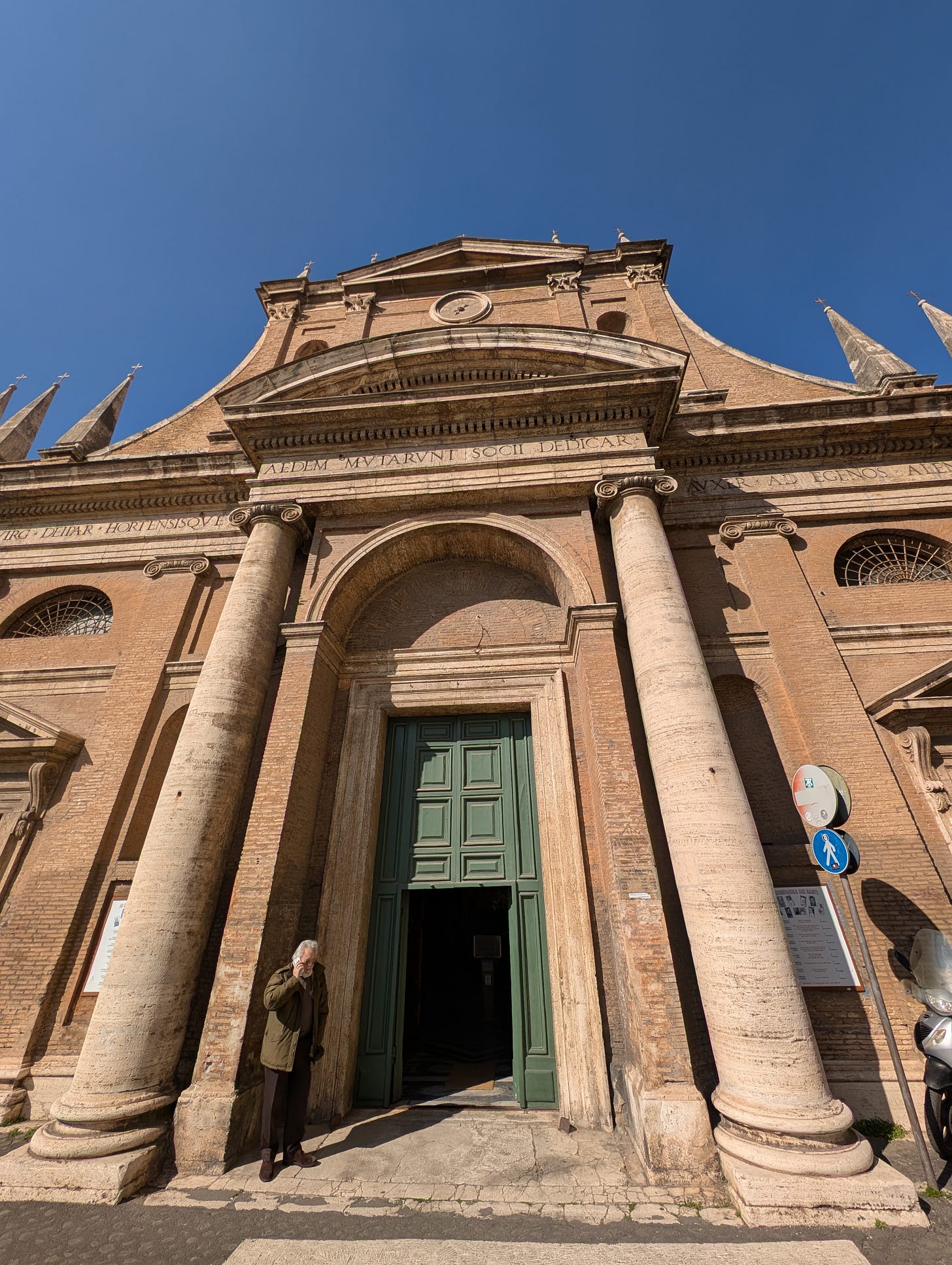
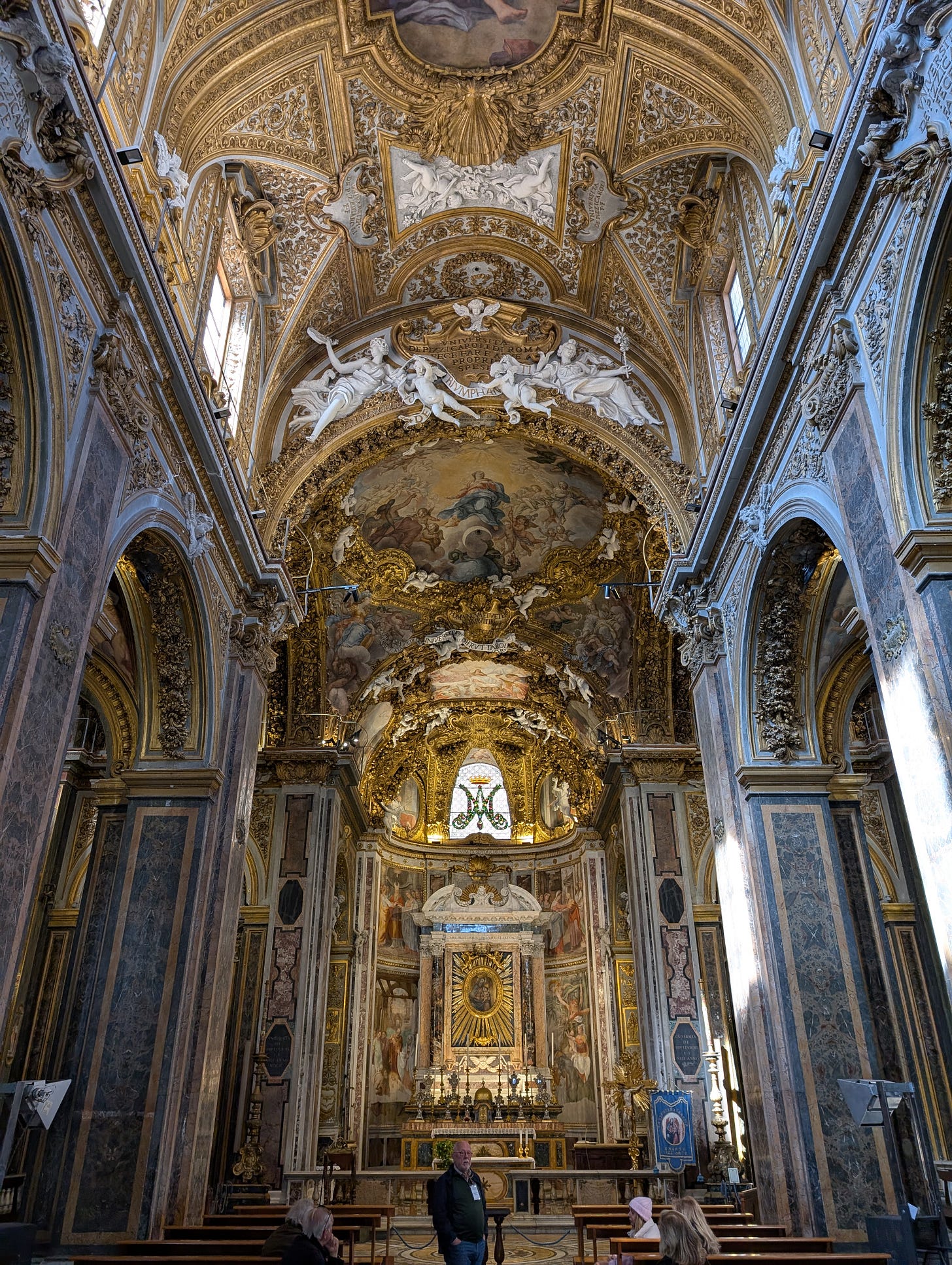

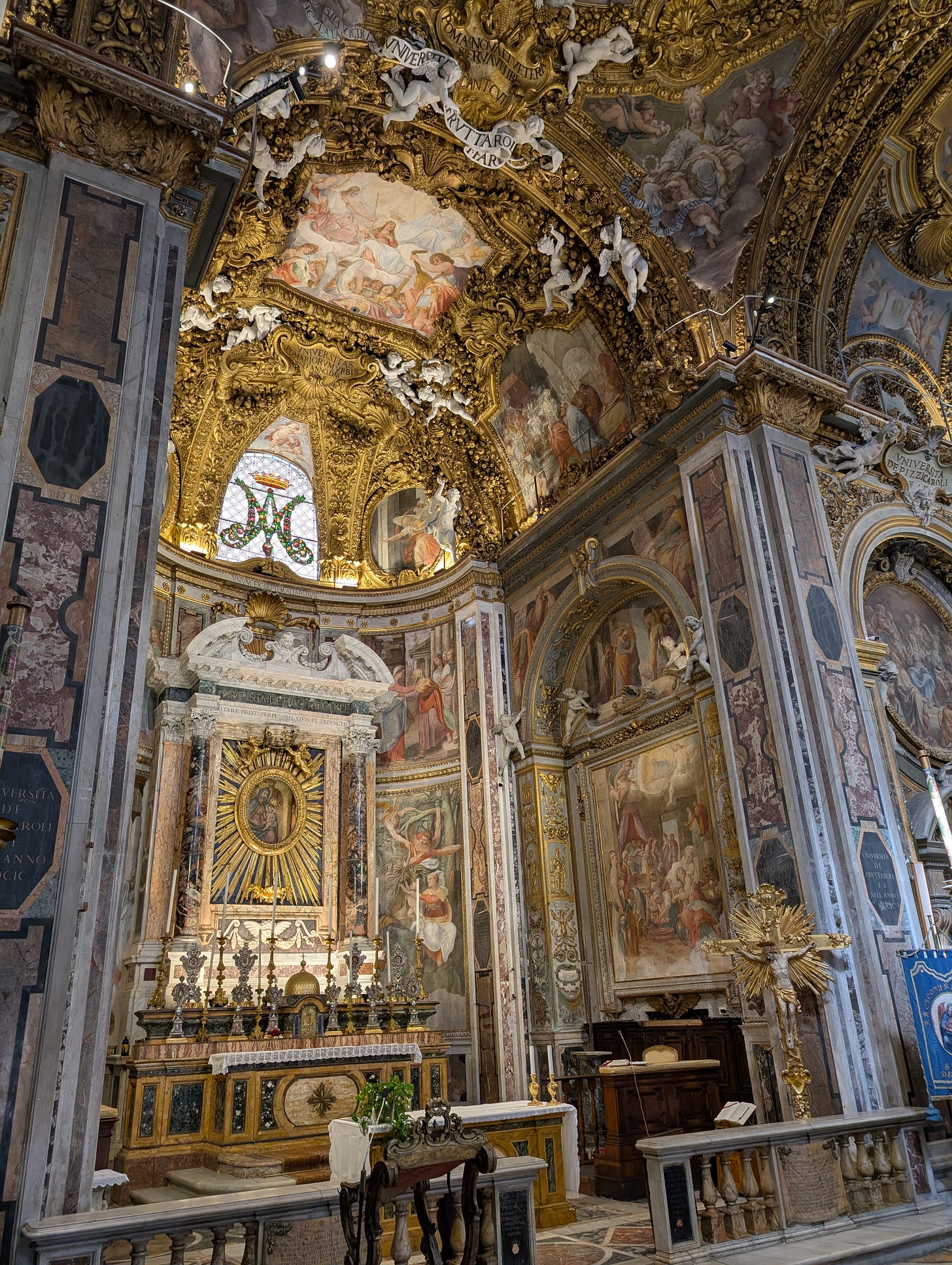
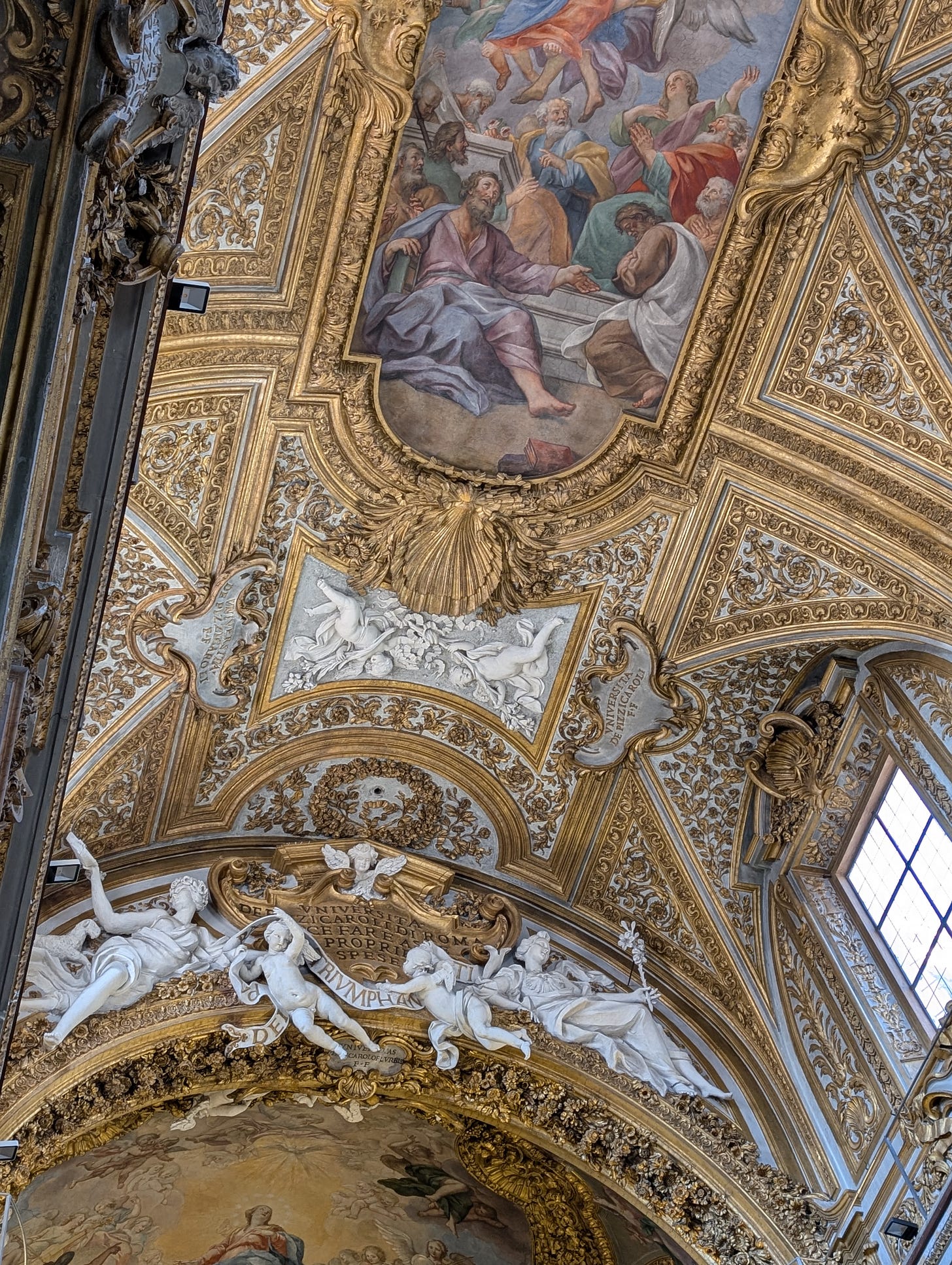
another magnificent church...One I have yet to visit. I'll try to pop in when Im in the area
on April 1... Looking for a new bookshop distributor in Rome now that anglo American
has had to close -after 70 years .
When my students stayed in Trastevere (in 1980s) I organized them at the convent that is now a 5 ***** hotel Donna Camilla on Via Garibaldi, they spent a lot of time visiting churches .